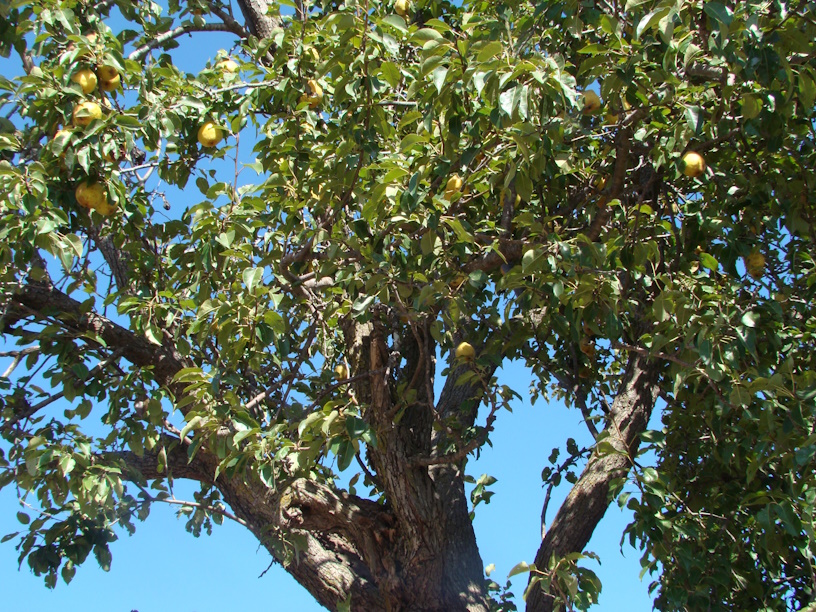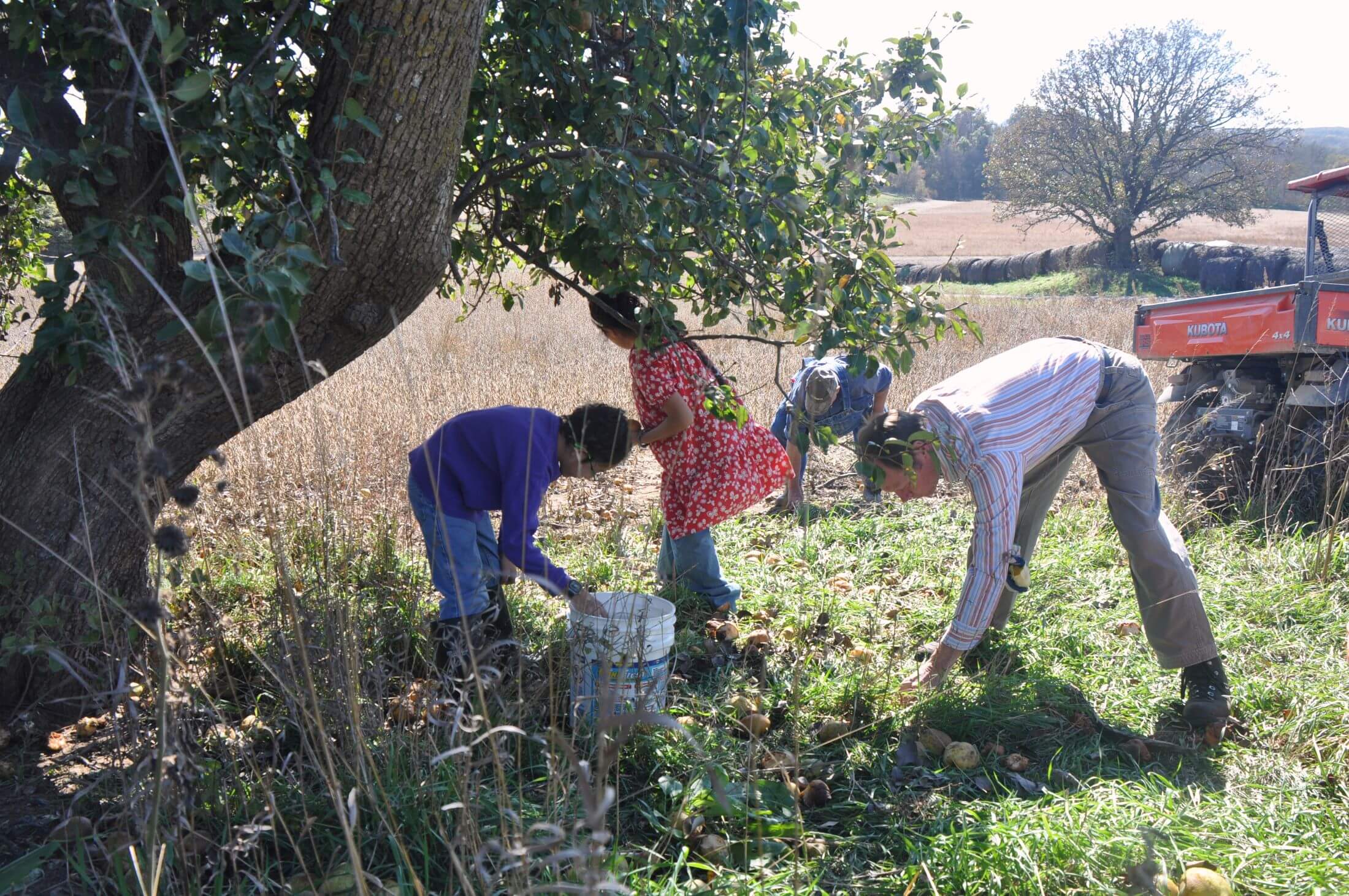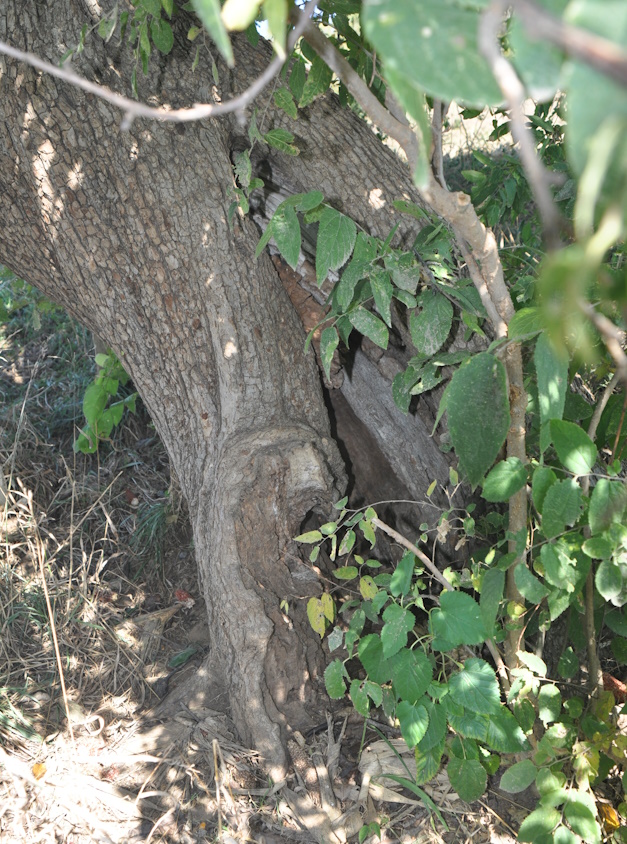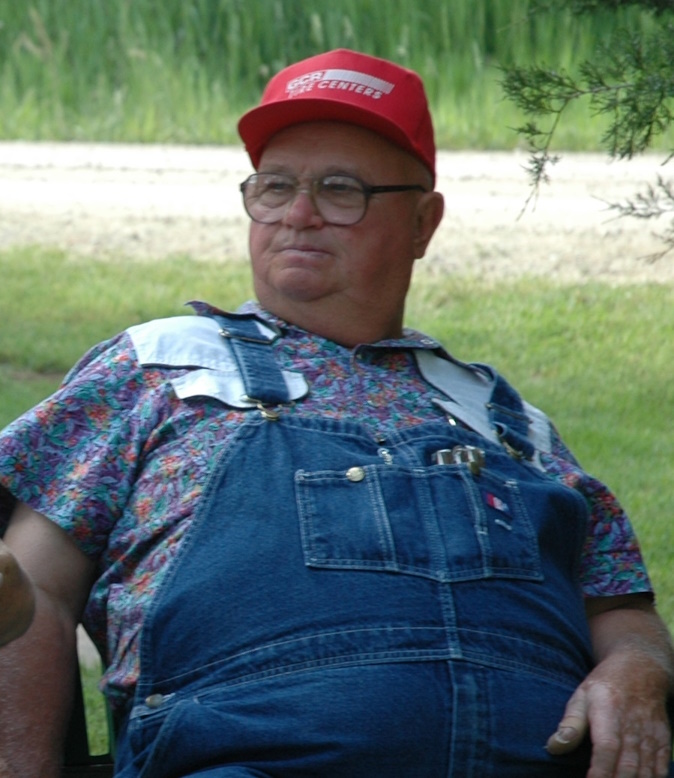The autumn season has always been my absolute favorite time of the year. Trees enchant us with their autumn explosion of reds, oranges, and yellows, their harvests connecting generations. I am profoundly thankful when the hot, sweltering summer heat gives way to crisp, refreshing fall mornings.The bright blue sky stretches overhead, promising a bountiful harvest season.
The Sentinel
Our farm’s long driveway was a journey in itself. The school bus left us at the mailbox to climb a small steep hill. Beyond, the farm’s landscape stretched out, perpetually watched over by the old pear tree.
The ancient tree at the field’s edge wasn’t just a plant but our family’s living history, predating even my father’s birth. Through countless seasons, it had observed storms and sunshine, droughts and abundant rains. Its lifecycle mirrored farm life—dormant in winter, budding in spring, flourishing in summer, and fruitful in autumn.

A Living Legacy
Pear trees, I’ve learned, are as remarkable as the seasons themselves. From China’s Tian Shan 4,000 years ago, these trees mirror my family’s rich farming heritage. The European pear varieties like ours—the Bartlett pear—are particularly fascinating. Unlike fussier fruit trees, pears are survivors, thriving from mountain valleys to rolling prairies.
The Bartlett pear originated in Berkshire, England, by John Stair, an English school teacher. Our pear variety was likely a descendant of trees brought by early European settlers. These immigrants carried more than just seedlings—they transported hope, resilience, and generations of agricultural wisdom across oceans and continents.
The tree’s root system tell a story of survival. Pear tree roots can extend 10-15 feet deep, creating underground networks that draw water and nutrients from seemingly barren soil. During droughts, while other plants withered, our pear tree remained resilient, its deep roots finding hidden water. My father would point to this as a lesson in perseverance: “Look how it finds a way to survive,” he would say.
The Rhythm of Farm Life
At harvest, farm life melded into a massive mechanism, operating like a finely tuned clock. The combine was the system’s heart, its steady hum timing the methodical harvest of golden crops. Trucks moved with purposeful determination, measuring the progress. Grain cascaded like sand in an hourglass, marking the rhythm of the season.
Dad, the clockmaker of this intricate operation, drove the combine with intentional precision. Mom transported the harvest to town, her capable hands guiding grain trucks with the accuracy of a pendulum. My older brothers maintained everything—moving equipment, managing animals, and keeping machinery running perfectly.
As the youngest siblings, we cherished small discoveries—newborn kittens and colorful rocks. Town trips in the dusty truck became adventures, while combine rides made us feel like royalty connected to our land.

The Harvest Tradition
Dad’s words were gospel, “Wait for the first freeze,” he’d always say. However, we children eagerly bit into hard green pears throughout the season, impatient for their golden sweetness.
When the freezing temperature arrived, the pears would suddenly soften, their sweetness intensifying. We’d grab 5-gallon buckets, excitement palpable. As adults we’d back the pick-up truck under the tree’s expansive branches, carefully shaking them and collecting fruits while dodging falling pears. My nephew’s ingenious “pear picker”—a contraption of PVC pipe topped with a wire hook—revolutionized our harvesting, allowing us to reach the sweetest fruit high in the branches.
My mother, a master of preservation, would can these pears for winter months, sometimes crafting “pear honey”—a topping that made the simple biscuit stand out. Food preservation was something my mother elevated to an art form. Her root cellar, which we called the “cave”, was a testament to self-sufficiency—shelves lined with mason jars containing not just pears, but pickles, tomatoes, green beans, beats, squash and countless other vegetables we’d grown throughout the summer.
A Bittersweet Season
This year, the tree offered its most bountiful harvest in memory. Thick spring blossoms had filled Dad’s eyes with hope, but in life, as in farming, nature has its own perfect timing. We don’t always choose our seasons. Before he could taste this year’s fruit, Dad passed away unexpectedly on the land he so dearly loved.
My daughter and I made the pilgrimage to the family farm to pick the pears, a bittersweet mission that connected us to my father’s memory. Our buckets were filled with smaller than usual fruit due to the abundant crop. As we worked, I noticed the tree was showing its age. Its hollowed base drew strength from its outer layers—like stories and wisdom that endure after loss.
My daughter’s memorable but painful pear-picking experience years ago has become a family legend. She was about four years old. While we were shaking the tree, a large pear tumbled down and landed squarely on her head. The incident is something she dramatically recounts every time we pick pears. This year, she came prepared, wearing a bucket as a makeshift helmet—a testament to both her humor and her determination to avoid repeating history.

The Cycle Continues
The pears we picked this year will feed not just us, but also our two butcher pigs, continuing the cycle of sustenance that has defined our homestead existence. Some pears will be preserved, some eaten fresh, and some will nurture the animals that are integral to our small farm’s ecosystem.
Our family’s connection to this land stretches across four generations. My grandfather first planted on this farm and handed it off to my father when he was a young man, who then transferred it to my oldest brother. He is grooming his oldest son to one day take over, continuing the farm cycle that has supported multiple generations.

A Final Watch
The old pear tree, like my father, won’t stand forever. Its hollow base tells us that someday, perhaps soon, its century-long watch will end. But the seeds of its influence – both literal and metaphorical – have been planted deep in the soil of our family’s story.
This autumn feels different as I walk up the long driveway. The familiar path now holds new meaning, each step an opportunity to remember and honor. The crisp air still invigorates, the harvest still demands attention, and life on our homestead a few counties over performs a similar ycle of growth, rest, and renewal that I first learned here.
As I stand under the pear tree today, I understand more deeply what Dad knew all along – that the true fruit of a life well-lived isn’t measured in bushels or years, but in the love, wisdom, and memories we nurture and share. Like the sweetness that comes only after the frost, some of life’s most precious gifts emerge from its most challenging seasons.




